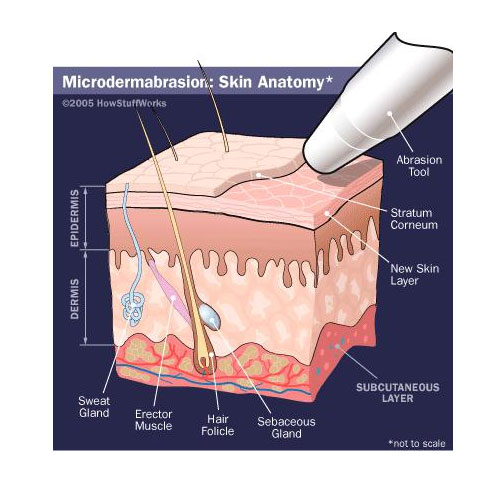Microdermabrasion

Microdermabrasion is a general term for the application of tiny rough grains to buff away the surface layer of skin and remove dead cells thus giving you a nice soft feel to your skin. It’s an effective alternative to other more complex procedures such as chemical peels although it can be added on to most other skin procedures for superior results.

The action of microdermabrasion takes place at the epidermis which is the most outer layer of the skin and so it’s very conservative and non invasive. The epidermis is home to many minor skin imperfections like fine wrinkle lines and blemishes.
With the superficial layer gone, the skin's surface is improved. The healing process brings with it newer skin cells that look and feel smoother. Some of the skin's visible imperfections, like sun damage, blemishes and fine lines, are removed. Also cosmaceutical products are more effective because more of their active ingredients and moisture can find their way down to the lower layers of skin.
What to expect?
A standard session usually consists of one to three passes with the tool followed by moisturizer as the procedure tends to dry the skin .
In the first hour after treatment, you can experience mild erythema (redness) and in some cases minor swelling. Depending on the individual, these side effects can last anywhere from an hour to two days.
What conditions can be treated?
Microdermabrasion works especially well as a way to clean out clogged pores. It's a useful alternative for patients whose skin is too sensitive to use anti-acne drugs like Retin-A. It's not recommended for those who have active oral herpes. Here's a list of the conditions that make someone unsuited for microdermabrasion:
- Active rosacea
- Fragile capillaries
- Vascular lesions
- Widespread acne
- Herpetic lesions (herpes)
- Warts
- Open sores
- Skin lesions
- Anyone who takes anti-coagulants
- Eczema
- Dermatitis
- Psoriasis
- Lupus
- Erythematosus
- Diabetes mellitus